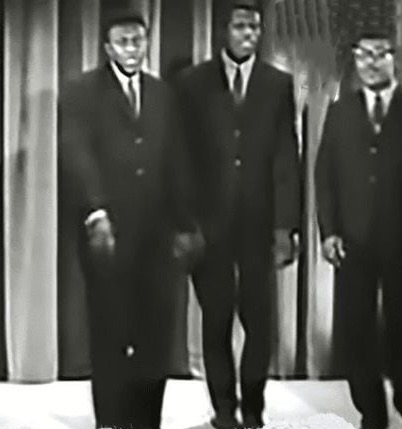
When Fred Parris penned “In the Still of the Night” in 1955, he likely had no idea that his heartfelt composition would become one of the most celebrated doo-wop songs of all time. Performed by his group, The Five Satins, the track initially made modest waves on the music charts. However, as the years passed, its haunting melody, romantic lyrics, and smooth harmonies cemented its place in musical history.
The Birth of a Classic in a Church Basement
Fred Parris was just 19 years old when inspiration struck him while stationed with the U.S. Army in Philadelphia. During a brief leave, he returned to his hometown of New Haven, Connecticut, where he and his group, The Five Satins, rehearsed in the basement of St. Bernadette’s Church. It was there, in that dimly lit basement, that Parris wrote the timeless ballad that would soon capture hearts across generations.
Recorded in a makeshift studio set up in the church’s basement, “In the Still of the Night” featured an intimate, raw sound that only added to its authenticity. The background vocals, paired with Parris’ tender lead voice, created an atmosphere that felt deeply personal yet universally relatable.
A Slow Rise to Fame
When the song was first released in 1956 on the Standord label, it was well-received but didn’t immediately skyrocket to fame. Instead, it simmered quietly in the background, gradually finding its way onto radio playlists and into record collections. The song eventually climbed to number 24 on the Billboard Hot 100 chart and number three on the R&B charts.
What set “In the Still of the Night” apart was its ability to evoke raw emotion. The longing and tenderness in Parris’ voice struck a chord with listeners, especially during the era when slow dances under moonlit skies were a staple of teenage romance.
Cultural Impact and Longevity
Though its initial reception was moderate, the song’s legacy began to take root in the decades that followed. It became a favorite on oldies radio stations, where it resonated with both older generations who remembered its original release and younger listeners discovering its charm for the first time.
One pivotal moment in the song’s resurgence came in 1987, when it was featured on the soundtrack of the iconic film Dirty Dancing. The movie became a cultural phenomenon, and its soundtrack—packed with timeless hits—propelled “In the Still of the Night” back into the limelight.
In addition to its film appearances, the song has been covered by numerous artists over the years, each bringing their unique interpretation to the classic. Notable versions include renditions by Debbie Gibson and Boyz II Men, both of whom paid homage to the original while adding their signature styles.
Recognition from the Rolling Stone Magazine
The enduring legacy of “In the Still of the Night” was further solidified when Rolling Stone included it in their 2010 list of The 500 Greatest Songs of All Time, ranking it at number 90. This accolade served as a testament to the song’s timeless appeal and influence on future generations of musicians.
Doo-wop music, characterized by its smooth harmonies and heartfelt storytelling, was at its peak in the 1950s and early 1960s. Yet, very few songs from that era have stood the test of time quite like “In the Still of the Night.” Its inclusion in such a prestigious list is a reminder of the powerful connection music can forge across time and space.
Why the Song Resonates Across Generations
The beauty of “In the Still of the Night” lies in its simplicity. The lyrics, while minimalistic, express a profound sense of love and longing. Lines like “I remember that night in May, the stars were bright above” transport listeners to a specific moment—a fleeting memory frozen in time.
Moreover, the harmonies provided by The Five Satins create an emotional backdrop that feels both nostalgic and evergreen. The combination of Parris’ smooth vocals and the group’s backing harmonies creates an auditory experience that is hard to replicate.
A Lasting Influence on Music History
Fred Parris may not have anticipated the monumental success of his song when he wrote it in a church basement nearly 70 years ago. Yet, “In the Still of the Night” continues to touch hearts, appear in films, and inspire cover versions by artists who admire its timeless charm.
For music lovers, the song serves as a bridge to a bygone era—an era of innocence, romance, and heartfelt music. It reminds us of the power of simplicity in songwriting and how genuine emotion, when paired with the right melody, can transcend decades.
Whether you’re hearing it for the first time or revisiting it on an old vinyl record, “In the Still of the Night” remains a beacon of doo-wop excellence—a song that not only defined a genre but also became a symbol of everlasting love and nostalgia.
Fred Parris gave the world more than just a song; he gifted us a timeless moment captured in melody, forever echoing “In the Still of the Night.”
Meta Description: Discover the timeless story behind “In the Still of the Night” by Fred Parris and The Five Satins. Learn how this doo-wop classic became an enduring cultural icon and ranked among Rolling Stone’s Top 500 Greatest Songs of All Time.





